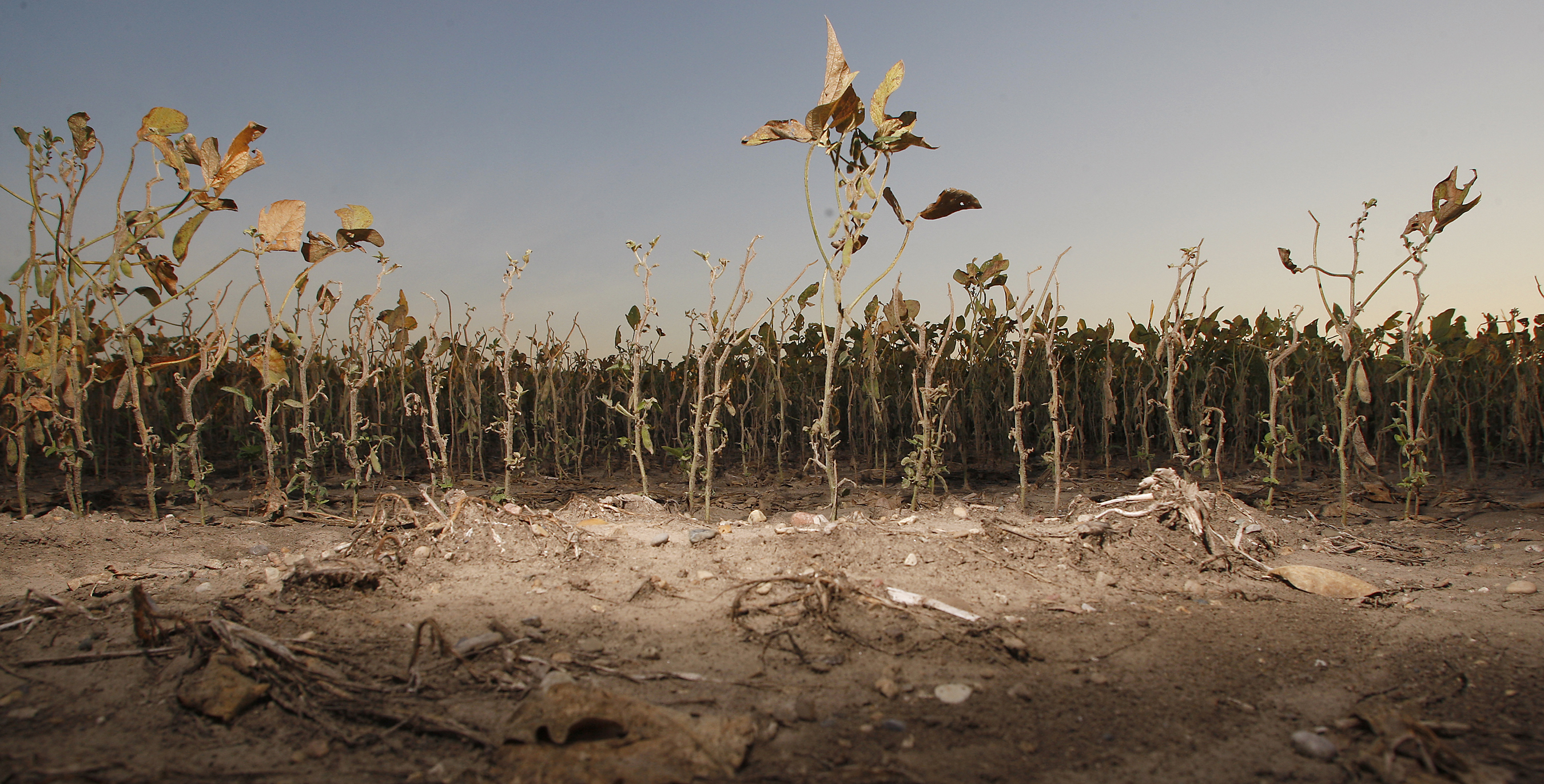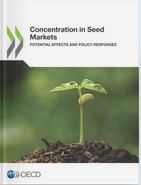 Topics Topics |
|
|
|
 Species Species |
|
|
|
|
|
Purdue University experts: U.S. crop report dismal, but not unexpected
Indianapolis, Indiana, USA
August 10, 2012
The U.S. Department of Agriculture's outlook for the nation's corn and soybean harvests reflects what farmers have been seeing for the past two months: vanishing prospects for a good year as their crops wilt from lack of water.
The USDA's August crop production report, the first projections of how much corn, soybean and other crops are expected to produce this year, paints a bleak picture as Indiana and other eastern Corn Belt states suffer through the worst drought since at least 1988.
In the report, released Friday (Aug. 10), USDA estimated Indiana's corn crop would produce 605 million bushels on yields averaging about 100 bushels per acre, a per-acre decrease of 46 bushels from 2011 and 57.4 bushels from Indiana's five-year average. Soybeans are projected to yield 37 bushels per acre, down 8 bushels from last year and 9.7 bushels from the five-year average.
"These are remarkably low numbers, especially on the corn," said Chris Hurt, Purdue Extension agricultural economist. "Indiana is the worst of the major production states in terms of corn production. We knew that early on. It started here and then spread to the west."
Hurt was among agricultural experts who reviewed the crop production report during a panel discussion at the Indiana State Fairgrounds. Greg Matli, deputy director of the USDA National Agricultural Statistics Service's Indiana field office, summarized the report, which projects that the nation's farmers will produce 10.8 billion bushels of corn. That is down 13 percent from last year, which also was not a good crop year because of a less severe drought. Soybean production is forecast at 2.6 billion bushels, down 12 percent from last year.
The agriculture industry expected bumper crops in Indiana and across the Midwest when farmers began planting earlier than normal this spring in what was then favorable weather - unseasonable warmth and little rain. There were forecasts that the nation's farmers could produce a corn crop of 14 billion bushels, nearly 1 billion more than the previous record, if the weather cooperated.

This surreal-looking soybean field near Dayton in Tippecanoe County is a victim of the 2012 drought that started in the spring and worsened into the summer. (Purdue Agricultural Communication photo/Tom Campbell)
But conditions soon deteriorated for crops as the heat intensified and fields got hardly any rain at all over the next three months. Hopes for a bountiful harvest evaporated as the drought worsened weekly, preventing many corn and soybean crops from developing enough to produce strong yields. By the end of the first week of August, nearly three-fourths of the state's corn crop - 73 percent - and 53 percent of soybeans were in poor to very poor condition. Because of that, USDA estimates Indiana's 2012 corn crop will yield nearly 38 percent below trend yields.
"This is the worst departure from trend yields in Indiana in at least 75 years," said Bob Nielsen, Purdue Extension corn specialist.
That includes the 1988 corn crop, which was down 30 percent from the previous year. Soybeans were down 20 percent.
This year, Indiana's soybean crop still has potential to recover some yield after widespread rains offered much-needed relief early this month, according to Purdue Extension soybean specialist Shaun Casteel.
"Beans are flexible, and there is a fair amount of growing season left," he said. "We've had some rainfall and more mild temperatures in early August, and if those continue, we can still make up ground."
Corn, on the other hand, isn't likely to improve much between now and what is all but certain to be an early harvest.
"We need to be prepared for an early harvest because not only was the crop planted early, but it also will mature even faster because of drought stress," Nielsen said.
Even with short corn and soybean crops, Hurt said growers could still find themselves in a profitable situation, depending on final yields and crop insurance coverage.
"We assume producers need bushels to have an income," he said. "Corn revenues are up 64 percent from what we expected in the spring and soybean revenues are up 24 percent. Some growers might have an opportunity to take advantage of the higher prices.
"Crop insurance will be another factor. We estimate that 65-75 percent of Indiana's corn and soybean acres are insured. Those compensation dollars will be very large this year."
Also key in final incomes will be growers' marketing and forward-contracting strategies and whether farms also include livestock, Hurt said.
This year's devastating drought has brought more attention to farming, the difficulties farmers face because of situations beyond their control and how poor crop yields affect consumers.
"The level of interest in what's going on - on the farm - has created opportunity for us to reach across the fence to non-farm friends and explain why this matters to them," said Joseph Kelsay, director of the Indiana State Department of Agriculture.
More news from: Purdue University
Website: http://www.purdue.edu Published: August 10, 2012 |
|
|
|
Better Food Venture's
AgTech Landscape 2019

|
| |
|
2019 THRIVE Top 50
landscape map

|
| |
|
Concentration in Seed Markets - Potential Effects and Policy Responses

(OECD December 2018)
|
|
Visualizing Consolidation
in the Global Seed Industry
1996–2018

Seed Industry Structure
1996-2018
Phil Howard
Associate Professor
Michigan State University
|
|
2017 Seed Company Family Tree
Ccreated Septebmer 2017
by Robert Walsh
WaSoo Farm, Elk Point, South Dakota |
 |
Syngenta Brands Family Tree
Ccreated January 2017 by Robert Walsh, WaSoo Farm, Elk Point, South Dakota
|
 |
| |
Rabobank's
World Vegetable Map 2018 |
 |
|
|